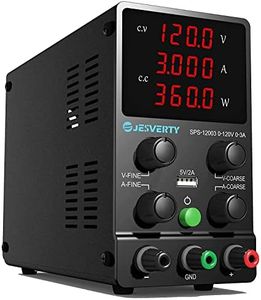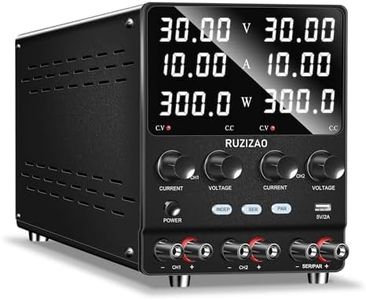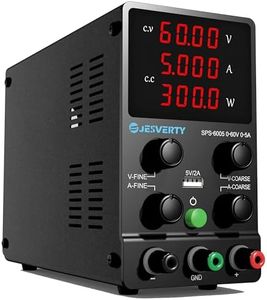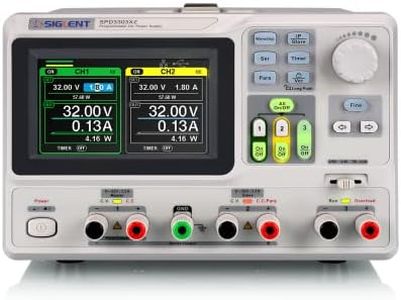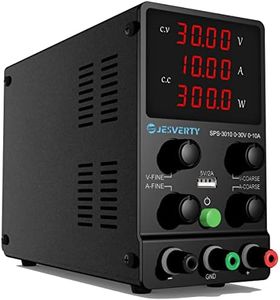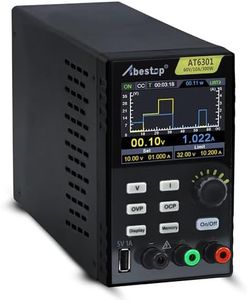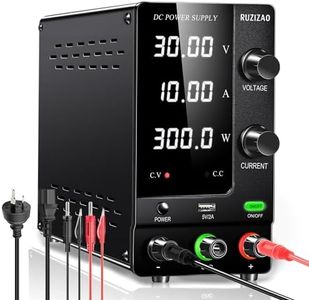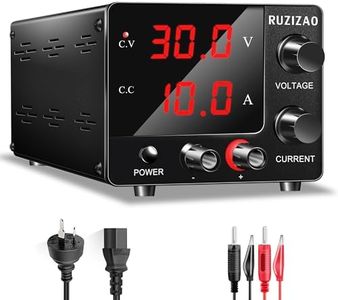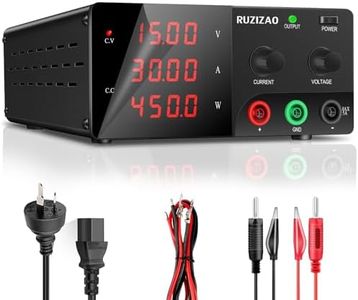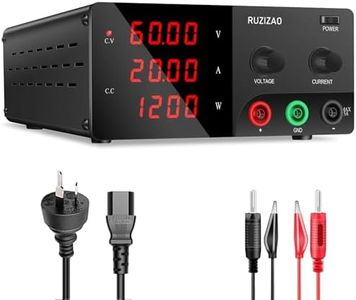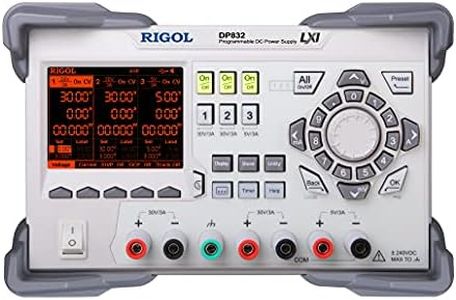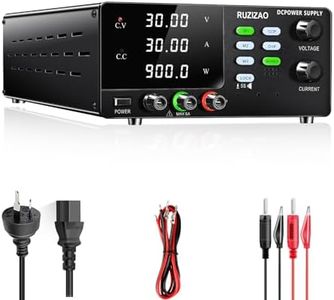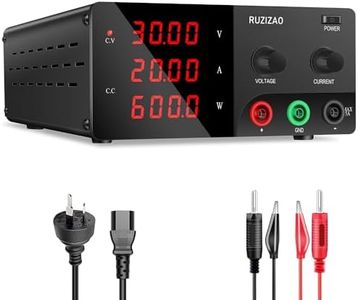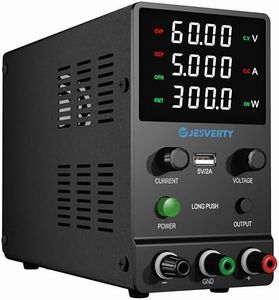We Use CookiesWe use cookies to enhance the security, performance,
functionality and for analytical and promotional activities. By continuing to browse this site you
are agreeing to our privacy policy
10 Best Bench Power Supply
From leading brands and best sellers available on the web.Buying Guide for the Best Bench Power Supply
Choosing a bench power supply is a smart move if you’re into electronics, DIY projects, or product testing. A bench power supply lets you safely and accurately provide power to a variety of devices and circuits for testing, repairs, or experiments. When picking one, it's important to focus on what types of devices and tasks you'll be using it for, as this will guide your choice of features and specifications. Think about what you’ll use it for most—whether it’s small electronics, robotics, or high-power projects. This will help you filter through the many options and find a supply that meets your needs without overcomplicating things.Output Voltage RangeOutput voltage range tells you the minimum and maximum voltage the power supply can provide. This is key because different devices and projects require different voltages. Lower-end power supplies might offer around 0-15V or 0-30V, which are ideal for small electronics and microcontroller work. Higher ranges, like up to 60V or more, are for larger or more demanding equipment. To choose the right range, check what voltages your typical projects need; it's wise to have some extra headroom, but getting much more than needed can make the supply bulkier and harder to use.
Output Current (Amperage) RangeCurrent capacity defines how much current the supply can deliver at once. Lightweight bench supplies might offer up to 1 or 2 amps, perfect for circuit boards or sensors. More robust models provide 3 to 5 amps for medium tasks, while heavy-duty options go beyond 10 amps for motors or power-hungry devices. When choosing current capacity, estimate your largest expected load; having too little means your supply won’t power your project, but you also don’t need an extremely high limit unless your work specifically demands it.
Number of Output ChannelsBench power supplies come with one or more output channels. A single channel lets you power one device at a time, suitable for simple projects. Dual or triple channel supplies allow you to power multiple devices, or different parts of a project, simultaneously and independently. If you often work with more than one voltage or need to test circuits that require dual supply (like both positive and negative voltage rails), a multi-channel supply will make your life easier.
Regulation Type (Linear vs Switching)There are two main technologies in bench power supplies: linear and switching. Linear supplies provide very clean, stable power with minimal noise, which is crucial for sensitive analog circuits. Switching supplies are more efficient, lighter, and can deliver higher currents, but sometimes introduce electrical noise. If you work mostly with audio or precision analog projects, linear is typically better. For digital, motors, or higher current projects, switching is usually sufficient and more practical.
Display and ControlsThe type of display and controls affect how easily you can set and read voltage and current. Basic models may have analog meters, while others use digital displays for higher precision and easier reading. Some supplies provide coarse and fine adjustment knobs for precise control. If you value accuracy and convenience, look for clear digital displays and fine adjustment options that let you dial in exact values without frustration.
Protection FeaturesKey protection features on a bench power supply include overcurrent, overvoltage, and short circuit protection. These features help prevent damage to both your project and the power supply itself in case something goes wrong. If you’re experimenting with new circuits or working in environments where mistakes happen, robust protection features are a must to help keep everything safe.
Form Factor and Build QualityThe physical size and build quality of your bench power supply will determine where and how easily you can use it. Large supplies are stable and robust but take up more space. Compact models fit on smaller workbenches or are portable. For frequent use, especially in demanding environments, a sturdy, well-built model will last longer and be less prone to failure.
